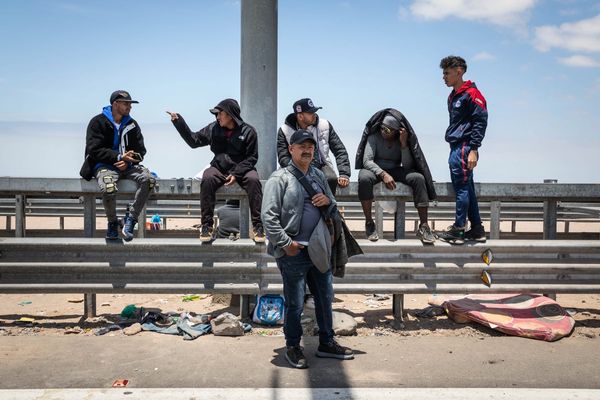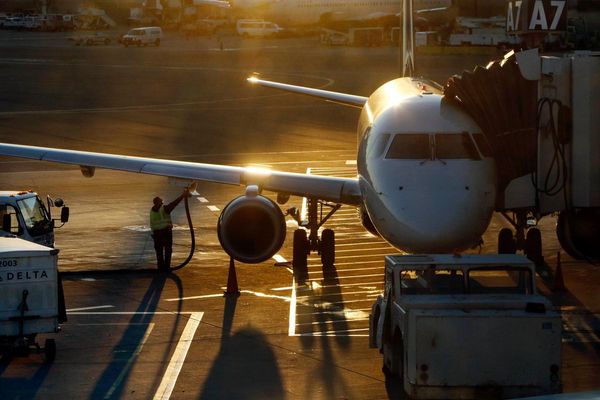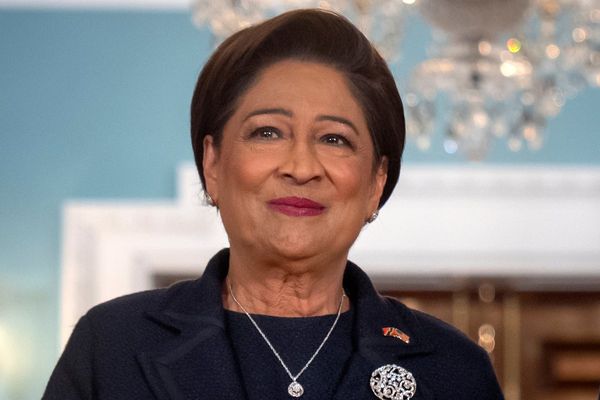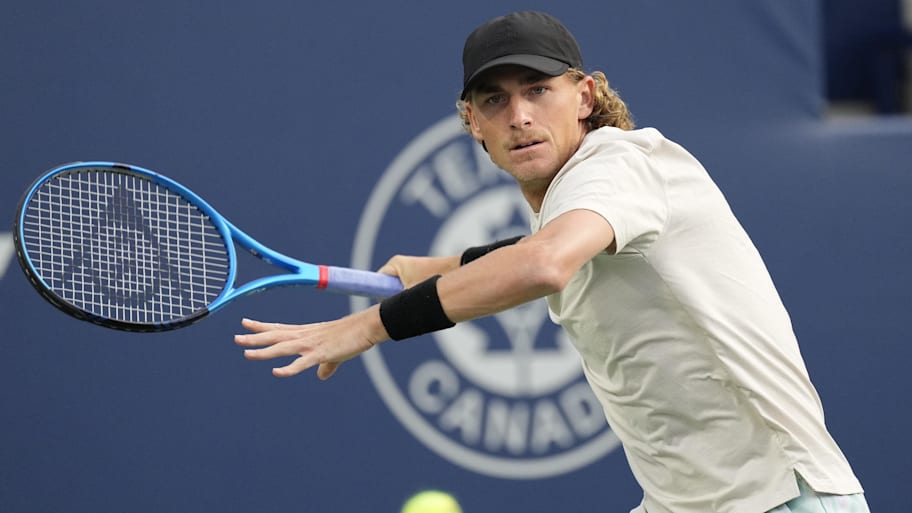
Submissions have been edited for brevity and clarity.
• Last week’s Served podcast on the top 10 tennis matches of all time—chosen by the readers—was loads of fun, and drew a load of responses.
• This week Andy and I talked about Madrid, doping and other topics.
• Venus Williams joins the TNT Roland Garros broadcast team.
• Jenson Brooksby won his first ATP Tour title last month, which was also World Autism Month. Here’s the excellent Andrew Eichenholz.
• For the New York Roger Federer-phile crowd.
• Nontennis: in the kitchen with the grandmas of Staten Island:
In 2007, Joe Scaravella opened “Enoteca Maria” on Staten Island, a restaurant where Italian grandmothers cooked regional dishes. It now features grandmas from around the world—and inspired the new Netflix film “Nonnas” starring Vince Vaughn. https://t.co/PTmgF8PI6x
— CBS Sunday Morning 🌞 (@CBSSunday) May 4, 2025
Onward …
This week Jannik Sinner returns to action in Rome, his first event since winning the Australian Open and, more critically, his first event since serving out his 90-day anti-doping ban.
Yet, it was another doping ban that generated most of the mail this week. The strange case of Australian Max Purcell, who last week accepted an 18-month ban for breaching rules. Some thoughts as I try to incorporate as many questions as possible….
A) Let’s start with the report. Here it is. And yeah, what a strange fact pattern. Investigators only came across this by happenstance, while investigating another matter. This involved an offseason IV infusion at a clinic in Bali—a “third world location” per the player—that was five times the acceptable amount, but contained no banned substance. And, critically, the player asked the clinic to keep no receipts.
B) Note that point No. 15 is entirely redacted. Without knowing the contents here, how is one to make an informed judgment?
C) Headline: There is something deeply unsettling about Purcell receiving six (!) times the suspension for an unacceptably large IV than the world’s No. 1 player received for testing positive for a banned substance.
D) That said, this is also a classic instance of the anti-doping truism: Every case is different. Here you have a minor infraction on the surface, but it’s surrounded by “bad facts” as they say in the law, not least the player requesting lacking phone records, “the Player requested the Clinic staff not to keep receipts relating to his infusion; (ii) the Player discussed ways in which he could justify receiving infusions, including feigning illness; and (iii) the Player subsequently researched whether or not the infusion was prohibited under the WADA Code (specifically, whether it was the ingredient itself or the water that was relevant to the limit of 100 mL within 12 hours).”
E) This is at odds with strict liability. But when tennis players finally have a voice in their anti-doping policy, there must be an “intent” clause. If authorities cannot establish an intent to cheat and gain competitive advantage, that must put cases on a different track.
F) Last week we referenced these shower monitors. Same hymnal, different verse now. Do you or do you not want a clean sport and level playing field? Yes, it seems odd and onerous that the size of IV bags is being monitored. Yes, it seems onerous that players seeking transfusions in the offseason are subject to the dictates. On the other hand, it’s easy to see why this is necessary. Massive IVs can be used to accelerate the flushing out or dilution of banned substances. A massive intake of fluid can alter data in a biological passport. None of this is to suggest Purcell did that. But this 100 mL limit doesn’t exist arbitrarily. Like athletes substituting out dirty urine in the shower (necessitating a minder), the authorities have created this rule to address a past loophole.
G) Let us hold two simultaneous thoughts at once. Sympathy for Purcell, who is serving a harsh penalty for a relatively minor offense. And a sense that his sloppiness and actions of omission and commission—not least the dubious decision to ask a clinic to discard a receipt—have grave consequences.
H) If nothing else, let this be a lesson to players. You don’t need to submit a positive result to get caught in the gears. Analytical evidence like text messages might be enough.
I've seen a lot of articles in recent months about [Iga] Swiatek's struggles and dip in form after her doping suspension, and agree that given the details provided, she deserved the benefit of the doubt. That said, having watched her matches the last few tournaments (including her recent double breadstick loss to [Coco] Gauff), is it wrong to wonder whether or not her drug use was indeed “performance enhancing”?
Rocky Lucas, NC
• Yes, it is wrong. In this case in particular, no one can look at the facts presented and think there was any performance-enhancing benefit.
But your question highlights an additional dimension to anti-doping. The returning player has the additional onus of demonstrating that their previous success did not owe to pharmaceutical enhancement, even if—as in the cases of both Sinner and Świątek—the authorities conceded there was no intent to cheat nor did the players get a material benefit, there will be a subset of fans left wondering.
Hey Jon,
Thanks for another great mailbag.
I thought this interview from Casper [Ruud] was insightful, particularly on the subjects of mental health, scheduling and balls.
Would love to hear your thoughts in the next mailbag or on the pod.
Cheers
Robert Henry
• Yes. Andy and I had an adjacent conversation with Mardy Fish last month. At what point does tennis hold a summit with the header: What is it about the ATP/WTA tours—pro tennis at the highest level—that appears to be so at odds with optimal mental health?
More charitably, good for tennis players—including Ruud and others too numerous to individually shout out here—for speaking openly about their challenges, destigmatizing what has long been a sports taboo.
Is it us? Or is Ruud—who of course won his first Masters 1000 last weekend in Madrid—drifting toward the Pat Rafter/Gustavo Kuerten/Kim Clijsters impossible-not-to-like classification? He’s accountable, accessible, funny, professional, inclined to give colleagues the benefit of the doubt but willing to stand up when he feels there’s been an injustice. He may or may not win a major, but what a dignified, credit-to-the-sport figure he cuts.
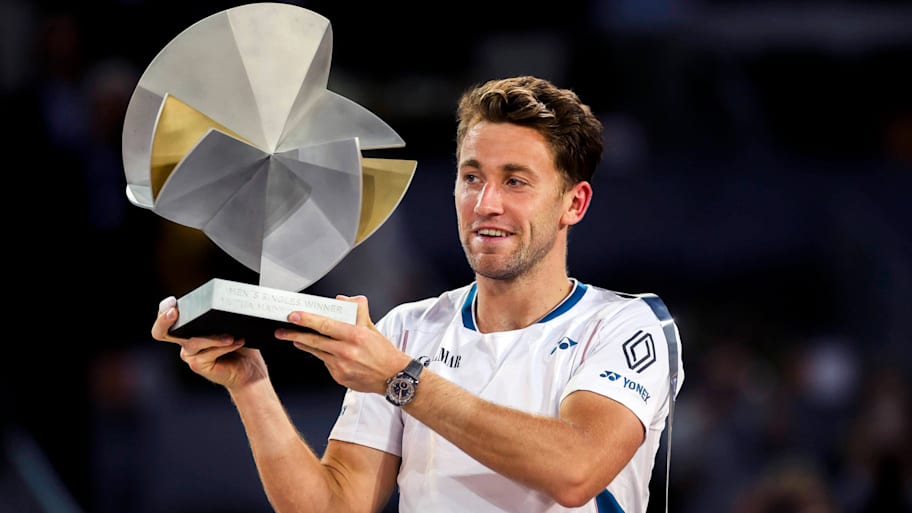
Hi Jon,
In your lengthy response regarding retirement considerations for [Novak] Djokovic, I was surprised you did not mention his (Sisyphean?) quest for a 100th title. I think we can all emphatically agree that 99 vs 100 titles makes zero difference to his GOAT status—but precisely because he is the GOAT, it seems he cannot rest without joining that ultra-exclusive 100+ title club with Federer and [Jimmy] Connors. And one good week, just one good week, is all he needs! So that can be the main reason why he is still hanging around.
AM, San Diego.
PS: For the few who may follow Cricket here, this is reminiscent of the great Sachin Tendulkar's quest for a 100 centuries circa 2011-2012. And it took him a full 369 days (thanks, Google!) to go from 99 to 100 before retiring. Djokovic is still within that window.
• Excellent Tendulkar reference.
I was surprised that a few of you mentioned this, as well as Djokovic’s possible motivation of winning 103 titles thereby matching Federer’s mark, second to Jimmy Connors’s record.
I don’t know. First, Djokovic repeatedly tells us that he is playing for the majors. When has he talked about amassing 100 titles as anything other than a want, not a need … much less matching the Federer mark? Also, if he really wanted an even 100 titles (or even 103) he could just finagle a way to add some 250s to his schedule. (Note: He may well play Geneva again so he has some Roland Garros preparation.) But at age 38, with a family at home, with all that a pro career asks of him, is he really still out here to beat four guys and win a small indoor title so he hits a tidy, round number?
Jon I’m sure you saw this [Charles Barkley riff]. Where do you stand on French Open versus Roland Garros?
Anon
• As someone who does not go by their given first name, I am partial/sensitive to the notion that subjects are entitled to choose their preferred nomenclature. Stanislas Wawrinka—happy 40th by the way—sends out a release asking to be known heretofore as Stan? Whatever suits you.
This situation is a little different because it’s being driven as a corporate branding exercise. For more than a century the major held in Paris was called the “French Open.” Then the hommes and femmes in marketing decided on a name change. And now there are memos going out reminding players and media that Roland Garros is the preferred term. I get the complaint. When the Mets Stadium was christened CitiField you could buy shirts reading, defiantly, “I’m still calling it Shea.”
But I can’t muster much outrage here. Does this really cross the line? We’re invoking the name of a World War I fighter pilot after whom the stadium is named. Not some crypto naming rights deal. Roland Garros it is. Save your outrage for the PIF rankings.
Shots
• “After years of successful collaboration, the United States Tennis Association Incorporated (USTA) and the American Tennis Association (ATA) today announce a new initiative reflecting their shared mission to grow participation, retention and leadership opportunities among diverse communities in tennis. The pillars of this new initiative include increasing Black representation in tennis, a mentorship program developing pipelines of diverse professionals in coaching and tennis careers and inspiring future generations to participate in the sport.”
More Tennis on Sports Illustrated
This article was originally published on www.si.com as Tennis Mailbag: Max Purcell’s Ban and Jannik Sinner’s Return.


